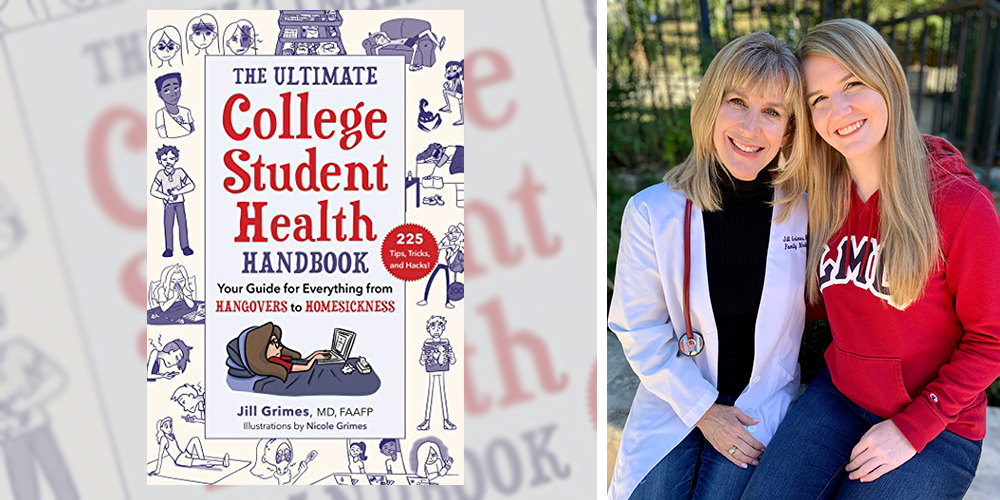
By the time Nicole Grimes ’21 was headed off to college, her mother, Dr. Jill Grimes, had already made several versions of “medical cheat sheets” on index cards and laminated pages for friends of the family. Recently the cheat sheets got a big upgrade. Packed with advice on everything from when to take Tylenol vs. Advil to what to do for food poisoning or even a hangover, Dr. Grimes’s book, The Ultimate College Student Health Handbook, was published this year complete with illustrations by Nicole. We caught up with the collaborating mother-daughter duo to learn more.

Nicole, how long have you been drawing, and how would you describe your style?
NICOLE: I’m that kid who covered the edges of my school notes with doodles and drawings, so I guess technically I’ve been drawing all my life. My preferred personal style is rather Disney-esque, and I enjoy creating new characters across the full spectrum of shapes, sizes, colors, and cultures. My first formal figure drawing art courses were actually here at LMU. I’m extremely grateful to LMU’s publishing press (TSEHAI) for my first employment as an illustrator during my sophomore year.
And what made you want to pursue animation as a career?
NICOLE: Until high school, I planned to become a veterinarian, but working for our vet made me realize that pet end-of-life issues were a deal-breaker for me. As I began looking for a career that would combine my math and science strengths and artistic interests, I realized that animation beautifully combined these skills. The next summer, I attended a two-week college credit animation course, and I was immediately and forever hooked.
 Since coming to SFTV, what is the most exciting or game-changing thing you’ve learned?
Since coming to SFTV, what is the most exciting or game-changing thing you’ve learned?
NICOLE: Quite honestly, I’ve enjoyed every single course at SFTV. Freshman year, I was in a constant state of amazement, pinching myself to believe that “school” was now filled with art studios, animation labs, and lectures focused on the history of film and television. Pitching stories in Beginner Storyboarding was scary and exhilarating at the same time, learning to give and take constructive criticism in front of peers.
Screenwriting opened a whole new world for me, cementing my desire to bring my original characters and stories to the big screen. I’ve loved learning so many different aspects of animation, from 3D to pre-visualization, to interactive gaming programs and even pixel animation. As a life-long dancer and musical theater fan, the most exciting project I’ve had was my Intermediate Storyboarding final, where we could craft any animatic, and I decided to do a song from a musical. This project pulled together every aspect of my creative skills—musical timing, artistic perspective, character development—definitely my perfect storm!
Dr. Grimes, is the book your first collaboration together?
JILL: Nicole has been drawing images for my blog and medical presentations for years, so this was a natural extension of her efforts, although this was our first time to share the same boss, our publisher, Skyhorse. I’m so proud of Nicole and appreciate her accommodating multiple last-minute drawing requests, which always seemed to happen the night before her exams.
What is your book’s key takeaway for college students?
JILL: The biggest problem I see in college health is students waiting until they are in crisis to seek help. They may be experiencing insomnia from stress, unable to walk on what they think is a “bad sprain” but is actually a fracture; or perhaps have developed mononucleosis along with strep throat. With Covid-19 filling our clinics and increasing our wait times, I worry that students might put off healthcare visits even longer. This book can help students maximize self-care while clearly understanding when it’s important to seek professional medical help.



